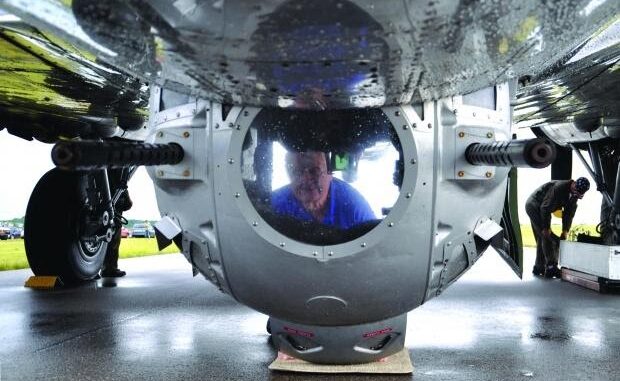
Lester Schrenk served as a ball turret gunner assigned to 327th Bombardment Squadron, 92nd Bomb Group of the 8th Air Force, stationed at RAF Podington. Schrenk’s story of service and survival against unimaginable odds is gripping. His post war reunion with the German pilot responsible for his 15 month saga as a POW is equally compelling. He signed The Log Book on 27 May 2017 and has remained a close advisor and supporter who patiently answers our questions relating to his war time experiences. Despite suffering immense cruelty during WWII and experiencing personal tragedy in later life, he remains soft spoken, gracious and kind. It is an honor to know him and his lovely wife Bernice.
77 years ago, on 22 February 1944 he earned a place in the Caterpillar Club by bailing out of a burning B-17 bomber. Prior to jumping, he witnessed ten of his comrades plummet to their death in a fiery wreck, one of several planes lost that day. Surviving the jump marked the beginning of his captivity. He was immediately taken prisoner, interrogated and forced to identify the corpse of his dead pilot and good friend, 2nd Lt William R . Lavies.
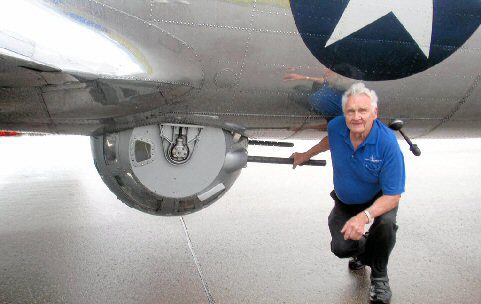
There are many stories to tell about this modest veteran. With assistance of the excellent website www.airmen.dk and Schrenk himself, this is the story of how a pin in the form of a red eyed caterpillar was earned.
The Caterpillar Club
Leslie Irvin of the Irvin Airchute Company in Canada is credited with inventing the first free-fall parachute in 1919. The Caterpillar Club was founded in 1922 as an informal association of people who have successfully used a parachute to bail out of a disabled aircraft. After authentication by the parachute maker, applicants receive a membership certificate and a distinctive lapel pin.
One of the most famous members of the club is US pilot Jimmy Doolittle who made two emergency landings with Irvin chutes. Upon surviving his second bail out in 1931, he sent a well-known telegram to Irvin reading: “Plane failed: chute worked” Doolittle’s co-pilot from the legendary Doolittle raid, Dick Cole, is also a Log Book signatory.
Schrenk’s Caterpillar pin has red eyes which denotes that aircraft was on fire when jumping.
But let’s back up a bit and tell the whole story.
Ball turret gunner
Schrenk clearly recalls how he inadvertently end up as a ball turret gunner. The account below occurred at Alexandria Air Base during initial stages of Flight Training in early August 1943.
The first day of my flight training I met Lt. Lavies. He was selecting his combat crew. He called several of us aside and asked each of us many questions about the B17s performance. I answered all questions correctly while the others did not. The pilot then asked me if I wished to join his crew and I said that I did.
Lester Schrenk recalling his recruitment to (then) Lt Lavies’s crew.
It was then that he told me that of his ten men crew there was only one position left, that being the ball turret. Being that I had never flown in a B-17 or ever having been in a ball turret, I did not know what I was getting into.
2nd Lt Lavies crew
The below picture of the crew as formed in August 1943. With the exception of two, this would be the same crew that flew the ill fated 22 February 1944 mission.
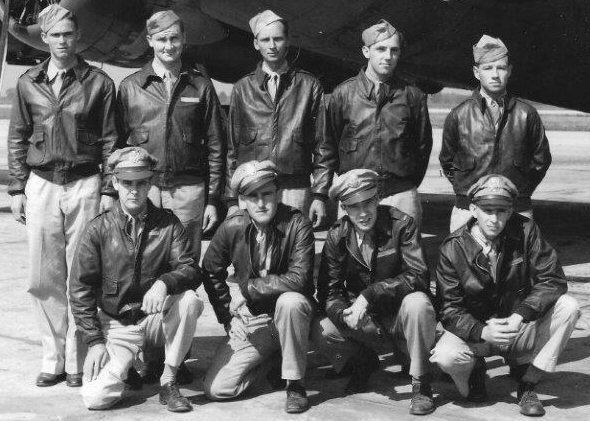
2nd Lt William “Bill” R . Lavies – bottom row, furthest left
The crew is assigned to 327th Bombardment Squadron, 92nd Bomb Group of the 8th Air Force. Stationed at RAF Podington they have already completed a total of 9 missions together. Schrenk recalled how tight knit the crews were.
One always felt more comfortable flying with your fellow crew members. In most cases even if you had a cold and could be excused from flying, you would continue to fly anyway. I can remember doing that myself.
Lester Schrenk
The sense of loyalty and fear of letting others down was pervasive. Another ball turret gunner Schrenk knew well, was grounded permanently after burning up 3 sets of gun barrels. Firing excessive bursts would overheat the barrels, destroying them. The gunner was so despondent at disappointing his crew members that he committed suicide.
Big Week – Day 3
BIG WEEK, or “Operation Argument”, was a bombing campaign to lure the Luftwaffe into a decisive battle. The aim was achieving air superiority to ensure success of the coming invasion of continental Europe.
By the end of BIG WEEK, the 8th Air Force alone would have lost 97 B-17s, 40 B-24s and another 20 aircraft scrapped due to damage. Bomber units’ strength dropped from 75% at the start of the week to 54%.
The German aircraft industry was again targeted in Day 3 of BIG WEEK. 789 bombers (maximum effort) were dispatched collectively from 1st 2nd and 3rd Air Divisions. German fighter opposition is heavy and bomber losses in 1st Air Division are massive – 39 bombers failed to Return (FTR). Severe weather and cloud cover frustrated the bombing attempts.
Mission summary for “8th Air Force 230 BIG WEEK – DAY 3”
The 92nd BG received orders to raid the German airfield Aalborg-West in Denmark. The mission is a diversion to draw Luftwaffe resources away from a greater raid to the Ruhr area in Germany.
For Schrenk and his crew 22 February marked their third consecutive day of combat operations. The crew previously flew to Leipzig on February 20th and Hopstein on February 21st. The mission, flown without fighter escort, would be their tenth and final of the war.
Pot O’ Gold #42-31377
The crew boarded B-17G (42-31377) “Pot O’ Gold” in the early hours of 22 February.
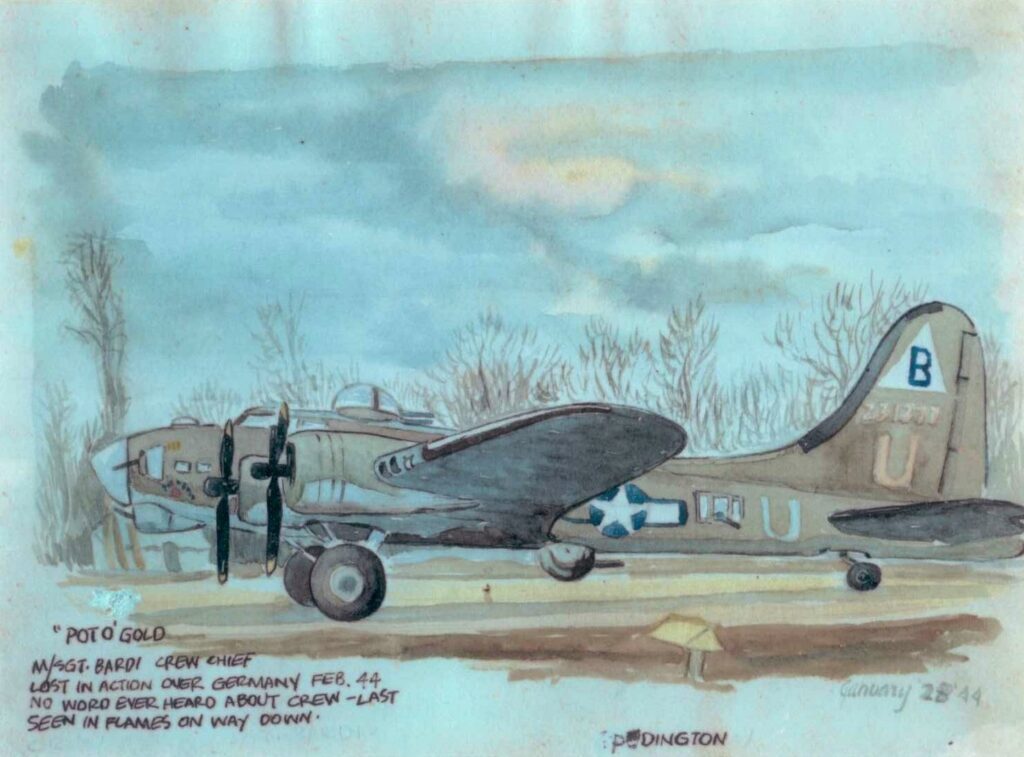
Source: https://www.americanairmuseum.com/media/5633
Pot O’ Gold is Schrenk’s favorite, as he explained:
We knew which planes were fast and which were not. Some just always had some problem and some did not handle well. We all had our favorite planes. My favorite plane was Pot O’ Gold, the one we were shot down in. No one wanted to fly in a plane that was marginal.
Lester Schrenk on Pot O’ Gold
Schrenk’s statement is a profound insight into his sense of duty and feidelity. In Schrenk’s memoirs, there is a passage describing his first mission. The plane could not keep up with the rest of the formation forcing them to return to base. Schrenk’s concern at having to abort wasn’t about his own safety but rather how the absence of their plane left the rest of the squadron exposed.
This made us feel as if we had let our buddies down as this meant that there were fewer gunners to protect the formation.
Lester Schrenk
Over the target
With the 92nd BG leading, the formation of B-17 sighted the Danish coast shortly after 1pm. Approaching at 24,000 feet, they discover that the target is covered in solid clouds. Luftwaffe fighters began closing in on the formation. The German interceptors were initially stymied by strong defensive fire from the B-17s.
German pilots confirmed to ground control that the mission is a diversion given the number of aircraft. Luftwaffe ace Hans Herman Müller in his Junkers Ju-88 was vectored to the formation. Müller’s orders were to observe the bomber formation, particularly the defensive capability and effectiveness of the new “G” B-17 variant with chin turret.
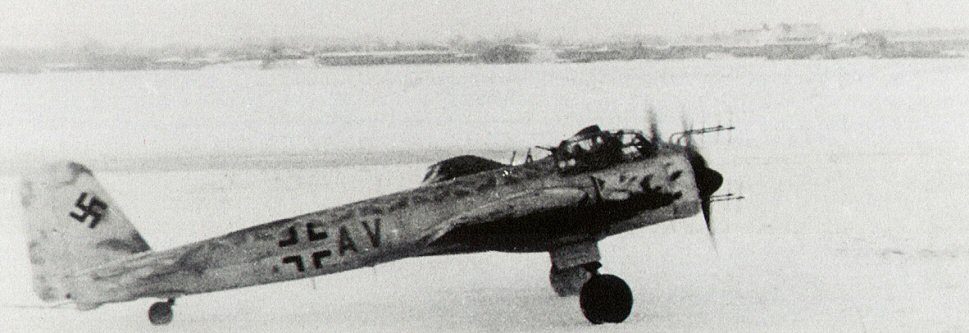
Source: https://www.airmen.dk/o888186-hhm4.htm
Shortly after 2pm the bomber formation arrived at Aalborg but bombing was impossible due to poor visibility. Circling the city twice, the decision was made to drop the bombs safely over the sea as no secondary target was highlighted.
By 2.26 the Luftwaffe fighters began attacking the B-17s with vigour.
Attacks
Schrenk described one positive side of being a ball turret gunner as having the best view of his crew. The ability to turn the turret 360 degrees in any direction afforded him a commanding perspective. The flip side meant he a front row seat to the carnage playing out as the battle raged around him.
Whenever your fellow crew men were shot down you could watch the airplane to see how many people would bail out; sometimes you would follow the airplane all of the way to the ground without seeing a single parachute.
Lester Schrenk
This was also the case for Schrenk when Hans Herman Müller attacked and shot down B-17 ‘HOT ROCK’ #42-97494 with his Ju-88. The bomber formation had now turned west over the North Sea to get away from the flak batteries. The aircraft to Schrenk’s right in the formation was hit. With an explosion, the aircraft start to lose altitude. He saw no parachutes and knew immediately there would be no survivors.
Further losses
In the same formation ‘LIBERTY RUN’ #42-31409 (MACR 2648) was hit by heavy flak while trying to make it out over the sea. Pilot 1st Lt Charles O. Barnes put out a radio message at 2.48pm stating that aircraft could not maintain altitude. The aircraft crashes into sea of the west coast of Denmark, there were no survivors.
Another tragic loss this day from the mission to Aalborg was ‘MI AMIGO’ #42-31322. Piloted by 1st Lt John Kriegshauser they managed to return to UK in their heavily damaged aircraft. Rather than risk hitting playing children in Endcliffe Park with faltering engines he avoided them and crashed further away. The entire crew perished, today there is a memorial at the crash site.
Shot down
Schrenk recalled that within a few minutes of seeing ‘HOT ROCK’ go down there was a loud explosion in his plane. He could see tremendous fire coming from number 4 fuel tank, and instantly knew they were descending rapidly. On the intercom he heard 2nd Lt Lavies tell the bombardier to jettison the remaining bombs.
With a 30 foot fire trail behind the aircraft, 2nd Lt Lavies lowered the landing gear; a universal sign of surrender. A series of explosions rattled the plane every few seconds, severe enough to extinguish the flames, which would erupt again.
Schrenk saw a German Ju-88 following at a distance, out of range and slightly above them. The German pilot fortunately respected their sign of surrender. Schrenk, realizing their plight, asked his pilot to leave the turret.
Not a quick exit
Exiting a ball turret, under normal peace time conditions, is an arduous process at best, requiring numerous steps including unplugging difficult-to-access electrical cords located under the seat. In an emergency, most airmen regarded the ball turret as the absolute worst place to make an escape from. The ball turret must rotate so that the 24 inch escape hatch is physically inside the aircraft. Survival utterly depends on functioning electric- and hydraulic systems. With Schrenk’s aircraft ablaze and suffering numerous explosions, this would not have been a given.
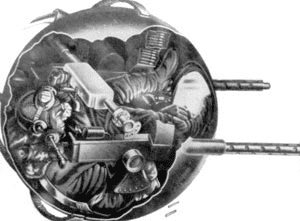
Below picture of Schrenk with a ball turret gives clues of the importance of positioning the turret correctly. In the picture the escape hatch is open but turret in the wrong position. Failing to position the turret with escape hatch inside aircraft would be fatal.
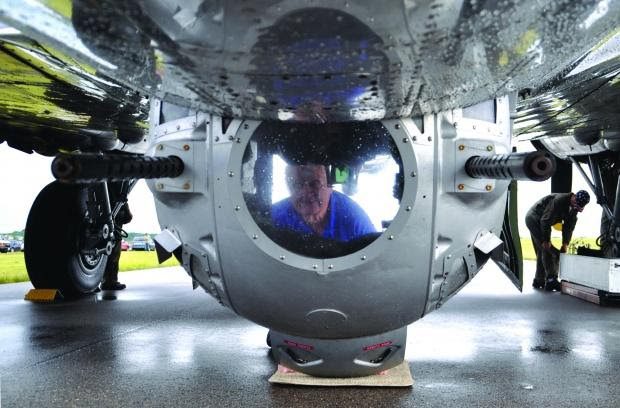
Schrenk received permission to leave his station, exited his turret and located his chest pack parachute. Snapping it into his harness he sat down against the bulkhead waiting for what lay ahead.
I do not remember anyone saying a word. Everything seemed routine. There was no panic and we all sat in silence waiting for land fall. I do not remember being scared, but I must have been!!
Lester Schrenk
I do remember praying about the grief and agony that my poor parents would be going through. Never did I think that I would not make it through the ordeal that lay before me….I was very calm and very ready to jump, just.
Bailing out
On seeing landfall, Schrenk called his intention to bail out and wished everyone good luck. He heard no answer. Five in the back of the plane would jump out the rear door. Right waist gunner, Guastella, is ahead of Schrenk and pulls the latch which jettisons the door. Guastella froze at the doorway, Schrenk recalled the solution.
Without hesitation, I raised my foot and gave him a boot in the rear with him flying out the door.
Schrenk jumped next and as he clears the plane and pulls the rip cord…the chute did not deploy. He found the drogue chute caught in the covering and quickly pulled it free. The snap as the main chute deployed was violent beyond words. As he descended he saw the Ju-88 make several passes above them. Schrenk heard a loud explosion in the distance about 5 km’s east of his position as ‘POT-O-GOLD’ crashes.
Capture
Schrenk saw German troops in the distance as he neared the ground. He landed in a plowed field with such force that nearly stunned him. Now a successful Caterpillar Club member, he unsnapped his parachute as German troops formed a semi-circle around him. In an act of defiance he deliberately stamped his parachute into the muddy ground thinking it would make it harder for the Germans to use. With about a dozen guns pointed at him he stood, absorbing his new circumstances.
At approximately 2.30 pm, 22 February 1944 Sgt Lester Schrenk from Minnesota was taken prisoner. His dramatic escape moments earlier marked the beginning of brutal captivity at the hands of his captors until his liberation some 15 months later. He was fortunate to survive. In typical Schrenk understatement, he recalled:
Although combat was very hard, the real trouble began upon being captured. For those who have never been a prisoner-of-war, they have no idea what it may be like.
Lester Schrenk
The fate of 2nd Lt William R Lavies
Schrenk spoke highly of his pilot, but also his friend, 2nd Lt Lavies. He referred to Lavies as being one of the nicest men he had ever known. Lavies’ care for his crew was comprehensive. During each mission he would periodically call each crew member and ask them to check in. The procedure was established to ensure no one was suffocating from from wounds or lack of oxygen.
Lt Lavies always took care of his men, even when we were on the ground, or going up town on a pass. He would always make sure that we were happy and OK.
Lester Schrenk
He even offered money to make sure that we had a good time, and was always a father figure. I never heard an angry word or complaint from him to the day he was killed. Even when he knew that we were doomed, he kept on reassuring us that all would be OK.
2nd Lt Lavies successfully bailed out of the stricken aircraft after flying it straight and level long enough for his crew to bail out. Unfortunately he landed on thin ice in freezing lake Ovesø. He crashes through on impact and ends up in the water. German troops prevented Danish locals from making any rescue.
2nd Lt Lavies perished in the cold water, he was 23 years old.
Stunned silence
Schrenk was being interrogated at the German HQ when a German soldier appeared with a wrist watch, a class ring and a crash bracelet. He instantly recognized the items as belonging to 2nd Lt Lavies but claimed not to know who they belong to. The Germans response was immediate. Angrily Schrenk was shoved outside to a wagon with a covered object in the back. The cover was pulled away to reveal the head of 2nd Lt Lavies.
I quickly touched his face and found it cold to the touch, but was quickly booted away and the German said “maybe that will refresh your memory”. At this point I did identify the pilot as I knew he was dead.
Lester Schrenk
The entire crew was by now captured and held prisoner at the HQ. As Schrenk was brought back inside he broke the sad news to the rest of the crew who stood in stunned silence.
Remembrance and tribute
4 aircraft were shot down in the Aalborg raid with 31 airmen killed. The entire 10 man crews of ‘HOT ROCK’, ‘LIBERTY RUN’ and ‘MI AMIGO’ were lost. Nine airmen survive from ‘POT O’ GOLD’ with Lavies the sole fatality.
2nd Lt William R Lavies from Alabama was buried in Fredrikshavn Denmark on 26 February 1944. After the war his remains were transferred to the Ardennes American Cemetery in Belgium on 1 May 1948.
His final resting place is in Block 23 of Elmwood Cemetery, Birmingham, Jefferson County, Alabama.
Thank you for your service and sacrifice.
Thank you for the extra few seconds of wings level ensuring that your crew could bail out safely.
During his 2008 visit in Denmark Lester Schrenk visited the ‘POT-O-GOLD’ crash site. He also visited and laid a wreath on the spot where 2nd Lt Lavies perished.

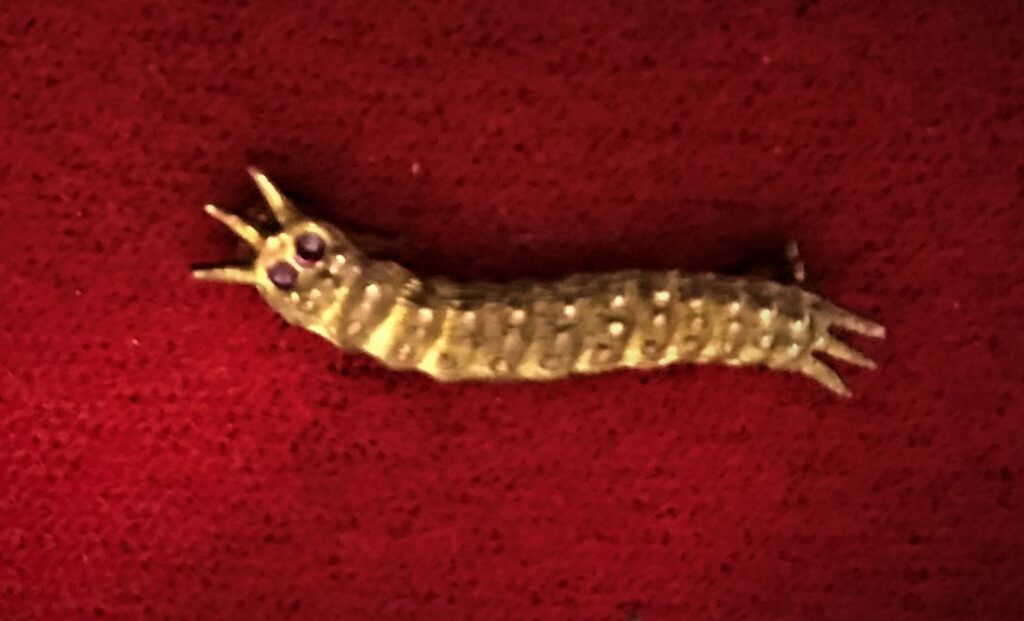

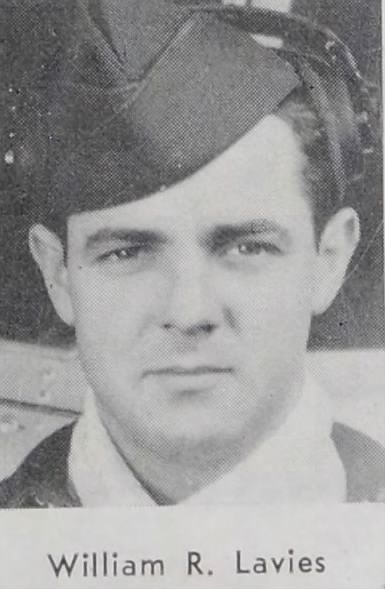
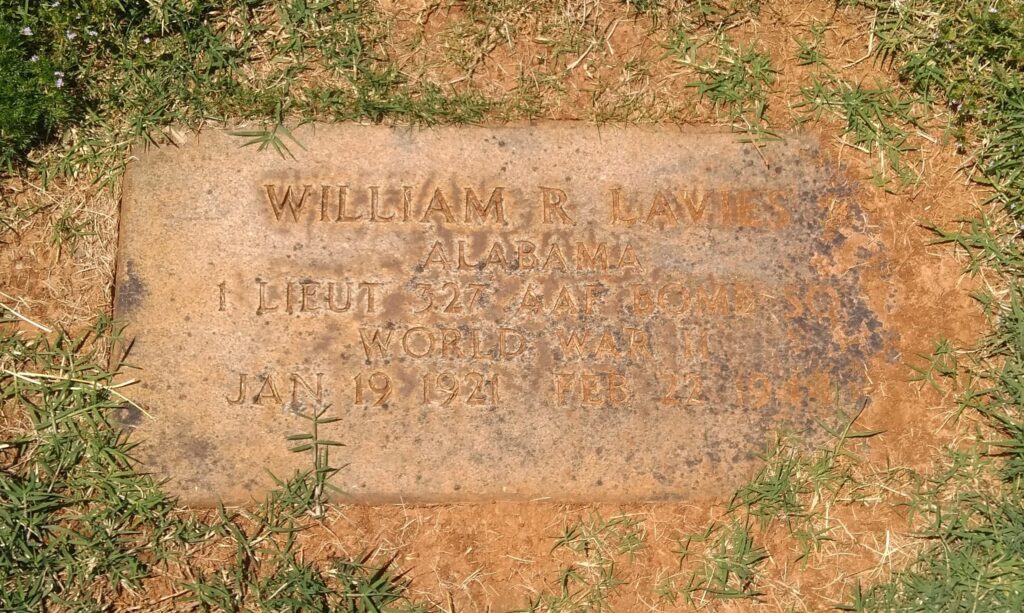

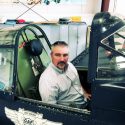
Be the first to comment